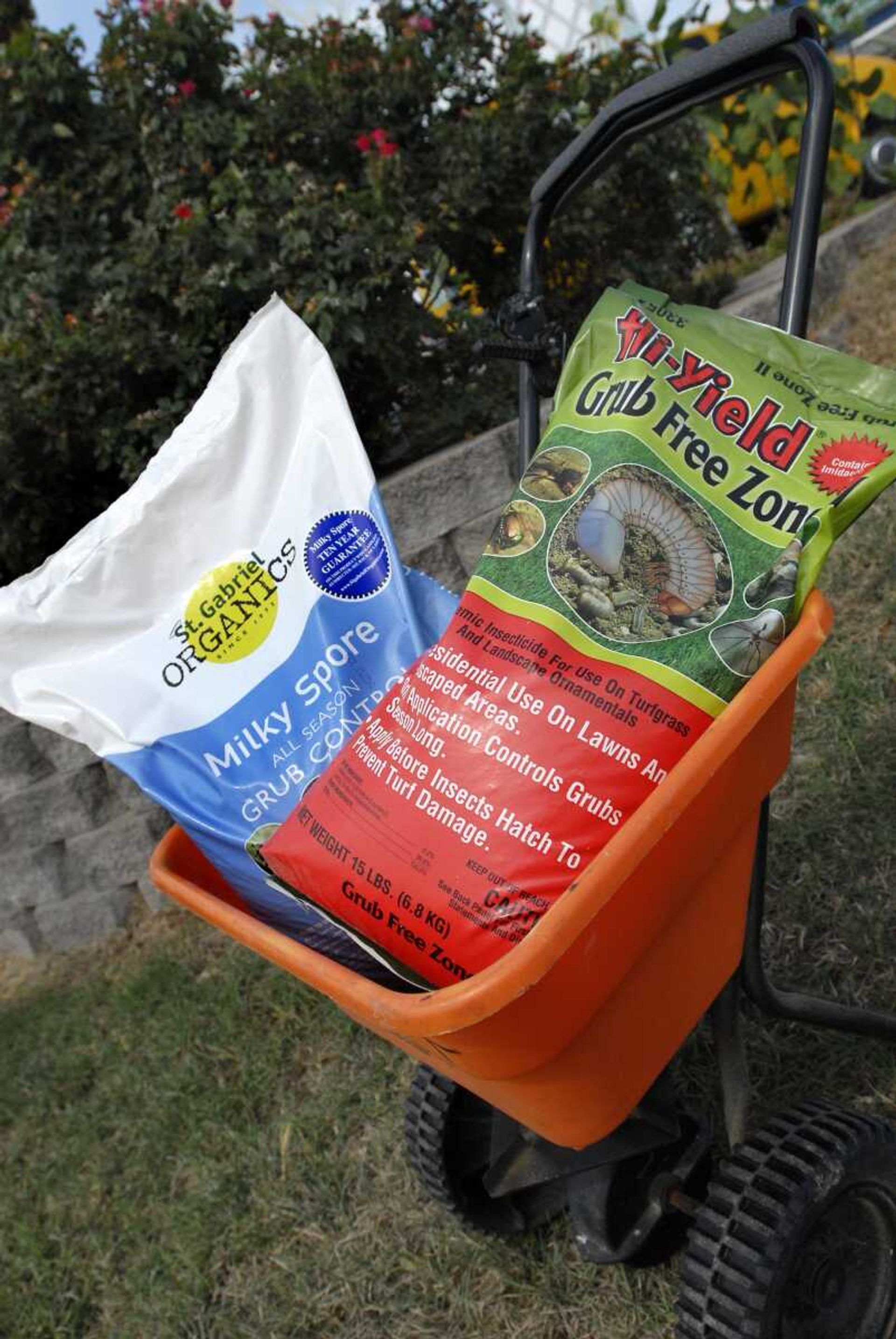Invasion of grubs
The 2011 invasion of Japanese beetle must be over. I am no longer hearing gardeners talk about Japanese beetles they collected in their traps. Is the invasion really over? To answer this question, you must understand the life cycle of the beetle. During the summer, adult Japanese beetles have two things on their mind, eating and mating. I am not sure which one is more important to them...
The 2011 invasion of Japanese beetle must be over. I am no longer hearing gardeners talk about Japanese beetles they collected in their traps.
Is the invasion really over? To answer this question, you must understand the life cycle of the beetle. During the summer, adult Japanese beetles have two things on their mind, eating and mating. I am not sure which one is more important to them.
The eating phase results in telltale damage to plant leaves and flowers. Flowers are gone, and leaves are left with the skeletons of veins. Because of this damage we are acutely aware of their presence in the garden.
While they are eating they also mate. After mating, the female adults lay eggs in soils in your lawn, garden and landscape beds. These eggs hatch quickly into grubs. The grubs stay in the soil until next spring when they pupate and then emerge as adults and the cycle begins again.
Unlike their parents, grubs only have one thing in mind, and that is eating. Since grubs are not apparent, the damage they cause often goes undetected. Unfortunately if the concentration of grubs per square foot of soil surface is high enough (10 or more per square foot), damage may begin to show up. I have seen whole lawns turn brown within a day or two because feeding grubs have cut all the grass roots.

I suggest that if you found a lot of adult Japanese beetles in landscape this summer, you consider applying an insecticide to your lawn, garden, and landscape beds to eliminate this potential for plant damage. In addition elimination of grubs in your landscape may reduce the damage that may occur in your landscape next year, although adult beetles will still fly in from the neighbors'.
You should make an application of insecticide to your landscape in August to get the best control. The grubs are close to the soil surface, which means that an applied insecticide doesn't have to move very far through the soil before it comes in contact with the grub. During the winter and early spring, grubs move deeper in the soil, and it is hard for an insecticide to move down into the soil and reach the grub.
Although there are several insecticides on the market that are labeled for grub control, I would suggest using either imidacloprid or milky spore. Both are effective but have different modes of action.
Imidacloprid can be purchased as a liquid or as a granule. I suggest using the granule, because after application the granule filters down below foliage and mulch. The leaves and mulch shade the granules from sunlight. It will stay in that form until rain occurs or when it is watered in.
If you apply imidacloprid as a liquid, the chemical will remain on foliage or mulch after drying. If it stays on leaves and mulch surfaces too long, sunlight will break it down and it will lose its effectiveness.

An advantage of using imidacloprid is the fact that it controls several other beetles in the Heartland that cause plant damage similar to that of the Japanese beetle. Only one application per season is required.
If you are concerned about pets coming in contact with the insecticide, make sure that you water the area treated after application, and before allowing the pets out of your home. You can also apply imidacloprid just before a rain for the same effect.
Another grub control, milky spore disease, is Bacillus popilliae, a bacteria. This organic method of control works differently than imidacloprid. The bacteria come in contact with the grub and infect it. The diseased grub then dies.
You need to make three applications of milky spore in spring, summer and fall for two years. The idea is to build up the bacteria population in your soil to the point that the population remains at a sustainable level so that you can get control for several years.
Milky spore disease is pet friendly. It is considered an organic method of insect control.

One disadvantage to milky spore is that the only grub listed on the label is Japanese beetle. As mentioned above the other beetles can also cause considerable damage to plants in Southeast Missouri.
If you found a large population of Japanese beetles in your landscape this summer, you will want to consider applying a grub control product to your lawn, landscape and garden at this time of the year. You will reduce the potential of plant root damage and may reduce the Japanese beetle population for next year.
Connect with the Southeast Missourian Newsroom:
For corrections to this story or other insights for the editor, click here. To submit a letter to the editor, click here. To learn about the Southeast Missourian’s AI Policy, click here.










